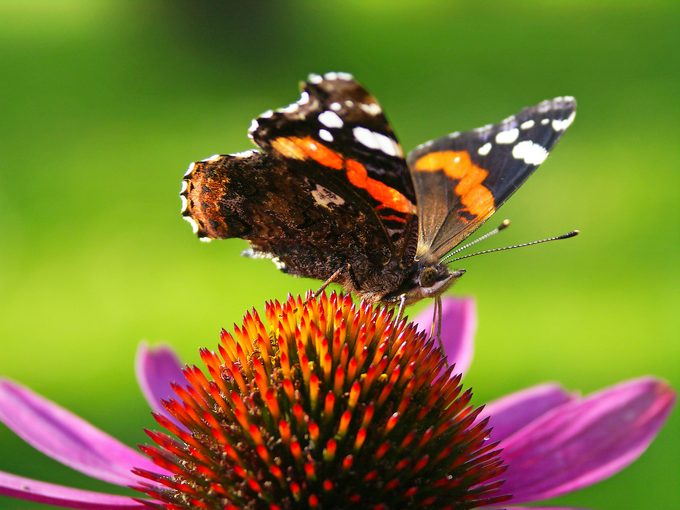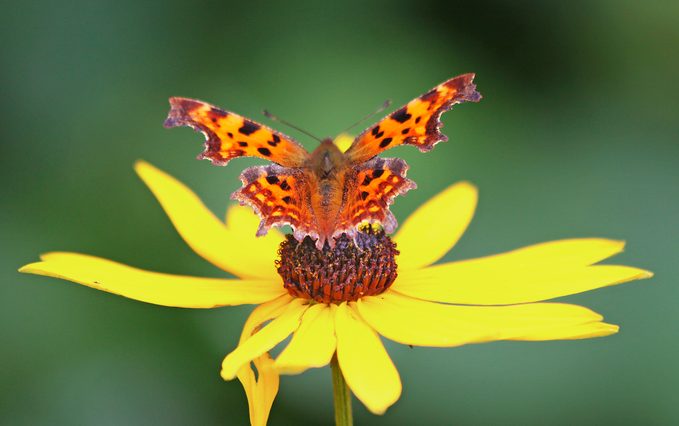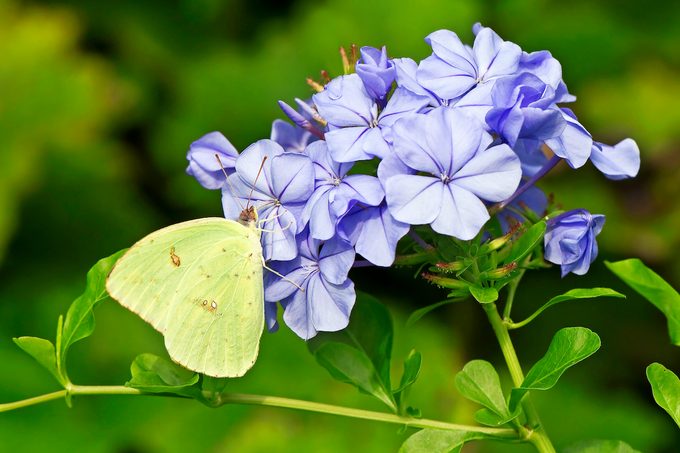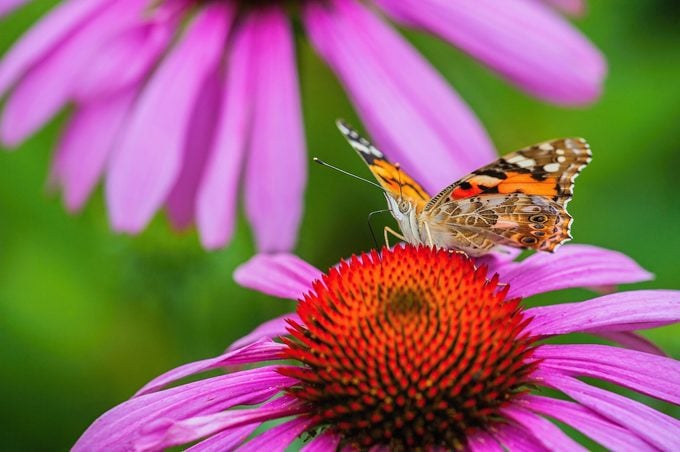Transform Your Yard Into a Butterfly Migration Hotspot
Updated: Feb. 20, 2024
Butterfly migration is an awe-inspiring process—and butterflies need our help! Make sure your backyard is ready for migrating fliers.
Do Butterflies Migrate?

Each year millions of monarch butterflies make an epic journey to Mexico in the fall and retrace their paths back north in the spring. To aid them, gardeners all over the country are diligently restoring monarch habitat. However, many other fliers need your help with butterfly migration, too.
Painted ladies move in response to changes in the environment, such as heavy winter rains that spark the growth of host plants in desert regions. They gather in such large numbers for these journeys that they’ve even shown up on weather radar in a swath more than 70 miles wide!
Painted lady migrations are well-known in certain areas, including the western United States. It’s hard to predict when they will happen, but the number of participants is massive. Painted ladies live all over the world, making them one of the most widespread species.
Red admiral butterflies also migrate. They are commonly seen throughout much of the country by midsummer, but they are unable to survive freezing temperatures during their life cycle. The northern populations die off in the fall, and those areas are repopulated the following summer by the year-round breeding population from the southern states. Red admiral migration is less visually impressive, but is easily tracked as the numbers spread north from Texas each spring.
Other butterflies that migrate north from a southern breeding population each year include cloudless sulphurs and common buckeyes.

Psst—not all butterflies migrate to escape winter weather! A few butterflies, such as mourning cloaks, question marks and commas, completely shut down their bodies and hibernate through winter as adults. Most species survive the cold months as caterpillars, chrysalides or eggs.
What Is Migration?
It occurs when large numbers of animals travel from one area to another. Movement during migration is purposeful. Other than stopping to rest and feed, the animals continue their quest until they reach their final destination.
How You Can Help With Butterfly Migration

Of course, butterflies can only make these amazing journeys when they have access to food and shelter along the way. With so much of their native habitat destroyed by development, butterflies depend more than ever on backyard gardens with host plants. Support healthy populations by making your yard the best possible wildlife habitat it can be. Helping them helps your yard, too, said Rhiannon Crain, former project director for the Habitat Network, a joint project of the Nature Conservancy and the Cornell Lab of Ornithology.
“Butterflies are such pivotal organisms in our backyard life cycles. They help pollinate as adults and serve as a food source for birds. Caterpillars keep plants in check even while they refresh the soil with their droppings. If you have a diversity of butterflies and moths in your garden, chances are you’re doing something right,” Rhiannon said.

Yard-improving actions to support butterfly migration may include:
- Add early- and late-blooming nectar plants to give butterflies energy throughout their most active seasons.
- Choose native host plants to help support new generations.
- Provide shelter for insects, such as brush piles, dead tree snags or rock piles. (Avoid butterfly houses, which usually just turn into homes for wasps.)
- Limit pesticides in your garden. Many kill all bugs indiscriminately. Instead, treat serious problems on a case-by-case basis.
- Keep your yard a little messy and leave leaf litter. Many butterflies tuck themselves inside to overwinter as caterpillars or chrysalides.
What You Plant in Your Garden Matters

To bring in specific butterflies, you’ll want to offer their preferred host plants. Favorite butterflies love the following:
- Red admiral — nettles, pellitory
- Painted lady — thistles, hollyhock, mallow
- Cloudless sulphur — cassia
- Question mark — elm, hackberry, nettles
- Common buckeye — plantain, snapdragon, toadflax
- Gulf fritillary — passion vine
- Monarch — milkweed
Migratory butterflies make some of the most impressive journeys on earth. They float on delicate wings for hundreds or thousands of miles, fueled only by flower nectar and a compelling impulse to continue their flight. As butterfly habitats decline and unpredictable weather patterns create new challenges, butterfly migration becomes more difficult. Those of us who love these creatures must keep doing our best to help them along the way.




















